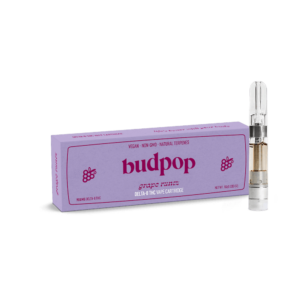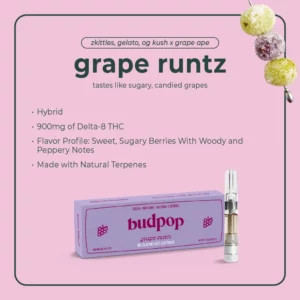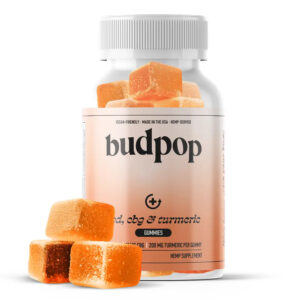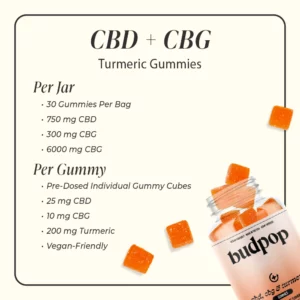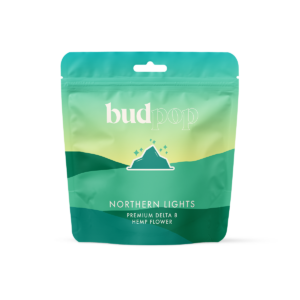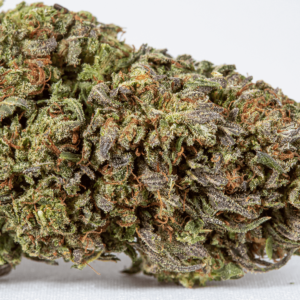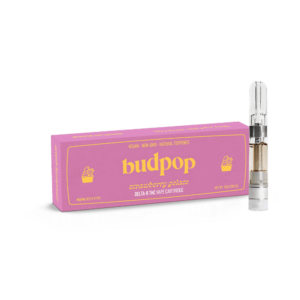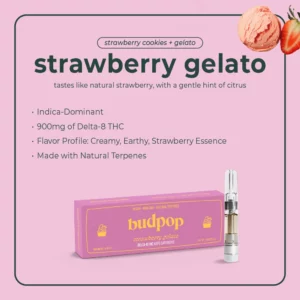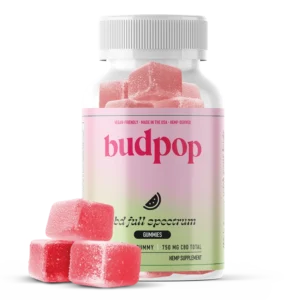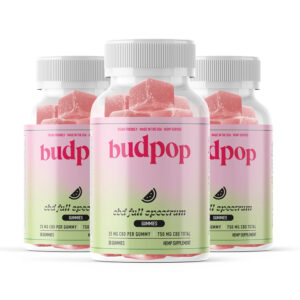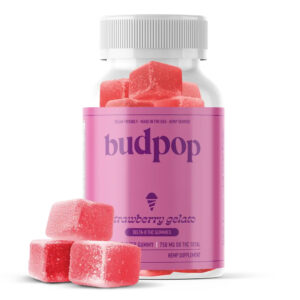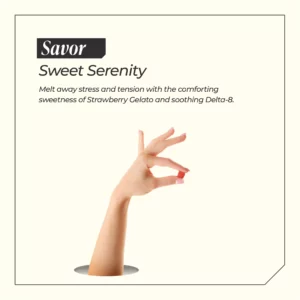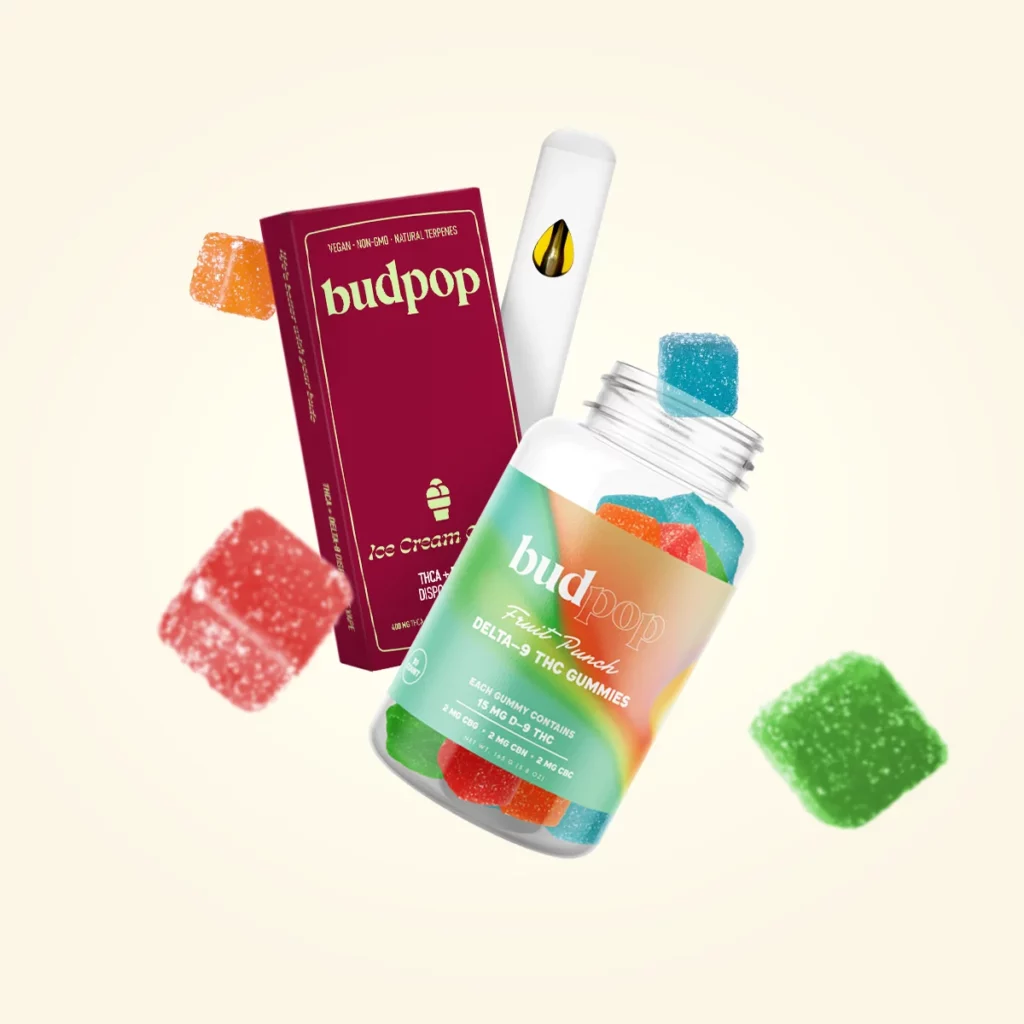The hemp vs marijuana debate has been raging for quite some time now. Most people interchangeably refer to cannabis as hemp or marijuana. While they have a somewhat similar makeup, both plants are actually quite distinct in properties. For starters, they have different origins, legislation, and even varying uses.
There is a distinct variance between hemp and marijuana as far as the law is concerned. For those in the industry, hemp and marijuana are interchangeable and may refer to the same thing. However, while both refer to the cannabis plant, assuming they are the same would be inaccurate.
At the same time, the other is federally illegal in the United States. So, quite frankly, we would not blame you if you get a little confused along the way. But, if anything, we commend you for coming here to read up on it.
With that being said, to help you understand the difference between hemp and marijuana, we have come up with a guide to break it down for you.
What Is Hemp?
Hemp is a variety of cannabis plants containing less than 0.3% of delta-9 THC (tetrahydrocannabinol) by dry weight. You should keep in mind that this definition is only recent and per federal legislation.
Long before legislators sought to classify this plant, governments were not strictly regulating the cultivation and use of hemp. It was just a form of cannabis that a lot of people favored for its versatile benefits.
For example, its fibrous and robust nature made it suitable for industrial use to make paper, clothes, textiles, etc. Besides its industrial functions, farmers grow hemp for its edible seeds and CBD content. In addition, cannabidiol is used as a raw material to make various products marketed for their therapeutic and psychological values.
A Brief History of Hemp
Hemp has a long history that spans thousands of years. According to Weedmaps, the oldest documented evidence of hemp use is a rope, and scientists found the string in today’s Czech Republic. They dated the cord and placed it at around 26,000 BC.
In addition, archeologists discovered remnants of hemp cloth dating back to 8,000 BC in ancient Mesopotamia — present-day Iraq and Iran. Archeologists have also found traces of hemp in parts of Asia, most notably China and Taiwan. The Chinese have a rich history of hemp use.
Hemp is one of the original crops to be cultivated for textile fiber, and China seems to have the most extended history of hemp use, dating back to 10,000 BC. The Chinese empire used hemp for clothing, rope, and paper. But, they were not the only ones who used it, as hemp was also grown in Japan from 5,000 BC. The Japanese used hemp for fiber and paper. Also, early Buddhists wrote their texts on paper made from hemp.
In approximately 1,200 BC, hemp made its way to Europe and spread throughout the world. The crop played a significant role in Greco-Roman history as a source of intoxication and as medicine. The ruins of Pompeii even contained hemp seeds.
Transition to the New World
There is not any conclusive evidence as to when hemp made its way to the new world. However, it existed among Native American civilizations, where it was used in rituals and for fiber.
In the United States, hemp was a cash crop from the 16th century. The founding American presidents, George Washington and Thomas Jefferson, had grown the crop for commercial purposes.
Previously, hemp harvesting was done by hand until 1917, when George W. Schlichsten patented a machine to separate hemp fiber from the woody core. This invention caused the cost of harvesting hemp to be reduced drastically while also increasing fiber yields. With such innovations and growing interest in using other parts of the plant, such as seeds and hurds, hemp was on a path to becoming a billion-dollar industry.
However, in the 1930s, hemp cultivation hit a slump in the U.S. due to the vested interests of synthetic fiber companies and lumber business people. They saw the developments in the hemp industry as a threat to their enterprises. Eventually, in 1937, under the Marijuana Tax Act, the U.S. government crippled and later banned hemp production.
During World War II, the crop again rose to prominence in the U.S., and hemp fiber was used for several items, including rope, canvas, and uniforms needed by the military. The U.S. Department of Agriculture emphasized how hemp was essential to the war cause and even released a documentary dubbed “Hemp for Victory.”
After the war, though, hemp went back to being a highly restricted substance. Through the Controlled Substances Act of 1970, industrial production of hemp was kept dormant. This dormancy lasted until the recent Farm Bill came about and the government-sanctioned industrial production. Hemp is now globally recognized as a valuable resource for fiber and various other CBD products.
What Is Marijuana?
By contrast, marijuana is a term widely used to refer to varieties of cannabis that have a THC content above 0.3%. Due to their high THC content, these varieties give a euphoric feeling of being “high” when consumed.
Marijuana has several street names, such as pot, ganja, reefer, doobie, and weed, and it is a common recreational and medicinal plant.
What Is Cannabis?
Before starting with the difference between hemp and marijuana, it is essential to understand the cannabis family. Scientifically speaking, both hemp and marijuana belong to the Cannabaceae family.
There are hundreds of species in the Cannabaceae family across different genus types, but you will find both hemp and marijuana in the cannabis genus.
There are three common cannabis species within the Cannabaceae family that you have probably heard of before, each with distinct features.
Cannabis Sativa
Cannabis sativa is perhaps the most popular species of cannabis. There are many variants of the species, some with high amounts of THC and others with lower doses. Interestingly, hemp and marijuana are both derived from cannabis sativa plants.
The cannabis sativa plant’s main characteristics are its tall, thin stature and narrow leaflets. The plant can grow to 20 feet high and often yields fewer flower buds. Typically, sativa takes a more extended period of time to grow compared to other cannabis types.
Cannabis Indica
Cannabis indica emerged from the Hindu Kush Mountains. The plant is shorter and has broad leaflets that often overlap. This foliage intersection typically affords it a bushy appearance. When the plant is mature, its leaves turn dark green.
The indica species takes a much shorter time to grow. As a result, it yields larger flowers than those on sativa plants. It has recently become a favorite among indoor growers because of its smaller profile and large flowers.
Indica plants usually have a higher CBD to THC ratio, although the THC content is still relatively high. However, there are not any variants of cannabis indica classified as hemp.
Cannabis Ruderalis
Cannabis ruderalis is the least known cannabis species, and for good reason. The plant has a small profile with various leaflets and produces low flower yields. The ruderalis plant also does not have any unique fiber content.
Despite its shortcomings, the ruderalis strain can grow in extreme environments and still produces flowers irrespective of day length. In addition, its hardy nature makes it useful for cannabis growers who want to create various indica and sativa hybrids with desirable traits.
The Four Major Differences Between Hemp and Marijuana
While hemp and marijuana are all forms of cannabis, a few notable differences set them apart.
- Chemical/cannabinoid composition
- Legal status
- Plant appearance
- Cultivation of the plant
Cannabinoid Composition of Hemp Vs. Marijuana
The main difference between hemp and marijuana boils down to their cannabinoid compositions. Cannabis plants, in all of their complexity, contain different chemical compounds known as cannabinoids. These compounds are responsible for the effects derived from consuming cannabis.
While researchers in the field still do not fully understand the role of cannabinoids, they have identified the major ones. These include tetrahydrocannabinol (THC), cannabidiol (CBD), cannabigerol (CBG), cannabinol (CBN), and tetrahydrocannabinol acid (THCA). The composition of these cannabinoids may vary among different strains. However, the ones most relevant to our discussion are THC and CBD.
- THC
THC is the primary psychoactive compound in the cannabis plant, and it is the one responsible for the euphoric (high) feeling you get from consuming cannabis. The THC content is also what sets hemp apart from marijuana.
Hemp plants, unsurprisingly, contain low levels of THC — mostly less than 0.3%. On the other hand, marijuana plants have more than that.
Most growers are always trying to optimize their marijuana plants to produce more THC, and most marijuana strains have between 10%-20% THC content. However, some premium strains will go as high as 30% THC.
- CBD
CBD is yet another compound found in both hemp and marijuana. Users widely regard CBD for its psychological as well as therapeutic values. Its benefits include anti-anxiety, anti-inflammation, anti-stress, and pain relief.
Hemp plants contain a higher CBD content compared to marijuana. However, some growers selectively breed cannabis to produce large quantities of CBD. Because of this selective breeding, the THC content inadvertently decreases.
Legal Status of Hemp Vs. Marijuana
In the U.S., cannabis regulations vary widely among different states. Simply put, hemp is federally legal, while marijuana is federally illegal. It all comes down to their respective THC content, and hemp lacks any meaningful amount of THC (<0.3%) for it to be considered psychoactive (intoxicating). Marijuana, on the other hand, does contain a reasonable amount of THC.
Before releasing the 2018 Farm Bill that opened up hemp cultivation to most farmers, hemp cultivation was a heavily regulated affair. Farmers had to make an application to grow it, and such guidelines subjected them to high taxation, monitoring, and scrutiny by the government. All of this has now changed, and farmers can now plant the crop freely if they so choose.
Marijuana, on the other hand, is federally illegal in the U.S. Despite this, some states have gone ahead to legalize its use for medicinal and recreational purposes. In other states that strictly allow marijuana for medical purposes, you have to sign up for a medical marijuana program.
Hemp Vs. Marijuana Appearance
Despite their differences, both hemp and marijuana are variants of cannabis sativa. However, by definition, marijuana can also fall into the indica strain of cannabis. In addition, since hemp and marijuana growers selectively breed the plants for different purposes, they ultimately take on a different appearance.
Producers commonly grow marijuana plants for their THC content, which is found abundantly in their flowers. As a result, you will find commercial growers prefer to breed their plants so they have more flowers.
Nevertheless, with regards to appearance, marijuana plants are often shorter and bushier than hemp plants. The flowers on marijuana plants also tend to contain more resin, a storage unit for the plant’s THC content.
On the other hand, hemp plants are much taller and thinner because they are primarily bred for fiber content. Hemp plants also have fewer flowers with small amounts of resin, which is no surprise when you consider their low THC content.
Producers also value hemp for its high CBD content, and a majority of the compound is in the leaves.
Hemp Vs. Marijuana Cultivation
Another critical difference between hemp and marijuana is in their cultivation. While marijuana plants are grown primarily for their flowers, hemp plants are grown for fiber, seeds, or CBD extraction. Given the cannabis plant is dioecious (has separate male and female plants), cultivation methods may differ between hemp and marijuana.
In marijuana cultivation, growers take out all of the male plants. This elimination is necessary if you are not interested in seed production. In addition, the absence of male plants allows the female plants to produce seedless buds (sensimilla), which most consumers prefer.
By contrast, most hemp fields incorporate male plants placed at random intervals to facilitate pollination. Male hemp plants make up the minority in such plantations because they produce less fiber than female plants.
Farmers plant hemp for oil extraction at approximately 10-15 plants per square foot. Thus, a spacing of 25-30 plants per square foot suits hemp fiber plants. Marijuana plants, on the other hand, are spaced more generously at a rate of one plant per four square feet. This spacing lowers the risk of bacteria and mold festering on the plant.
Hemp plants are almost exclusively grown outdoors and with minimal care. Marijuana plants, on the other hand, are produced in indoor grow operations and greenhouses. Such environments allow growers to closely monitor factors such as humidity, time of day and night, and air circulation. These factors often have a substantial impact on the quality of the final product.
Uses of Marijuana
Marijuana contains high concentrations of THC (delta-9 tetrahydrocannabinol), which is the primary psychoactive compound. Marijuana is a medicinal as well as a recreational plant, and consumers commonly smoke or inhale it as vapor through the use of vaporizers. Other products, such as edibles, tinctures, and candy, come from marijuana and offer the same effects for those who prefer not to smoke.
The THC in marijuana can also treat anxiety, lack of appetite, and offer pain relief, and it achieves these effects by altering the perception of the brain. Marijuana is also an ingredient in making CBD oils and nutritional supplements that offer a full spectrum of cannabinoids.
While marijuana may benefit some users, those new to its use should take it slow. Higher THC levels may cause bouts of anxiety and paranoia, especially for those not used to it. So, you must always look out for the cannabinoid content of the products you consume.
Uses of Hemp
Hemp is a versatile crop scientists estimate to have about 10,000 uses. Every part of the hemp plant is a raw material for making a variety of products. Here is a breakdown of how the hemp plant goes into various products.
Hemp Seeds
Hemp seeds have a rich supply of protein, and experts say they contain all of the nine essential amino acids. The seeds can either be eaten whole or hulled. However, it is best to have them complete for extra fiber in your diet.
Additionally, the seeds have a rich balance of omega-6 and omega-3 fatty acids. These essential fatty acids are similar to those found in other protein sources such as eggs, meat, and soy. In other parts of the globe like the European Union, hemp seeds serve as food for birds.
Other than its nutritional benefits, dealers cold press hemp seeds to produce hemp seed oil, which is a crucial ingredient in skincare products. The hemp seed oil also goes into paints. It is vital to know hemp seed oil contains trace amounts of cannabinoids. So, it would be best if you did not mistake it for CBD oil.
Hemp Fiber
Fiber production is perhaps one of the oldest uses of the hemp plant. Hemp fibers are critical for making textiles, paper, rope, and other commercial products. The thread has a profile close to that of linen and is less flexible than flax.
There are two categories of hemp fiber — bast fiber and hurds. Bast fiber lies on the outer part of the hemp stalk, while the hurd tucks inside the stem. Once processors remove the bast fiber, the hurd is what remains. The inner section then makes animal bedding, compost, and ceiling panels.
Hemp CBD
The flowers and leaves of hemp are a rich source of CBD. The increased popularity of CBD products has seen the demand for hemp-derived CBD skyrocket, which has led to an increase in production as industry players seek to cash in.
Manufacturers also use hemp CBD to make delta-8 THC, which, simply put, is a milder version of THC. Hemp CBD undergoes a series of chemical reactions whose end product is delta-8 THC. Since delta-8 comes from CBD, it does have the benefits of THC without the less desirable aftereffects.
Pioneering companies like BudPop are working on bringing innovative new products to the market. They work to ensure the consumer gets all of the beneficial effects of THC without the adverse side effects. BudPop, for example, is committed to delivering high-quality, ethically sourced, organic, hemp-derived delta-8 THC that is guaranteed to elevate your mood.
Hemp Vs. Marijuana Oil
Oil producers extract CBD from the leaves and flowers of hemp plants. As a result, more people are focusing on CBD oil as a source of relief from various conditions like anxiety, chronic pain, and insomnia. One upside to the oil is that it does not contain significant THC amounts. So, newer users tend to prefer it. However, some industry pundits are skeptical about its effectiveness.
Some cannabis experts believe THC and CBD work better together rather than apart. This is because cannabis oil comes from high resin marijuana buds. Unlike CBD oil, cannabis oil is rich in a wide variety of cannabinoids, including both THC and CBD. Furthermore, experts realize marijuana plants have genes for cannabinoid synthesis within the body.
Take Away
Both hemp and marijuana are somewhat similar, as both plants are species of cannabis, albeit with diverse uses. One significant difference appears in cannabinoid composition. Hemp is usually a cannabis variant with less than 0.3% THC, whereas marijuana is the variant that contains more than this amount of THC. Processors use the dry weight to distinguish THC levels.
Other countries also have their own classification of hemp and marijuana. For example, in the E.U., the prerequisite amount of THC a plant should have to be classified as hemp is 0.2%. However, hemp does have plenty of industrial uses that have caused many countries worldwide to relax their regulations.
The lack of meaningful THC content in hemp makes it a valuable resource for producing many CBD products. These products are slowly becoming mainstream as scientists continue to shed light on their potential benefits.
Now, while mainstreaming might be a good thing, it casts a shadow of doubt on marijuana products that can be just as beneficial.
The legal definitions imposed on marijuana make it hard for scientists to conduct meaningful research on its benefits. As more states allow marijuana for medicinal use, scientists can now dive into studying the cannabis family. Hemp and marijuana both have innumerable benefits for users, and we hope regulators and industry players can work together to benefit consumers.
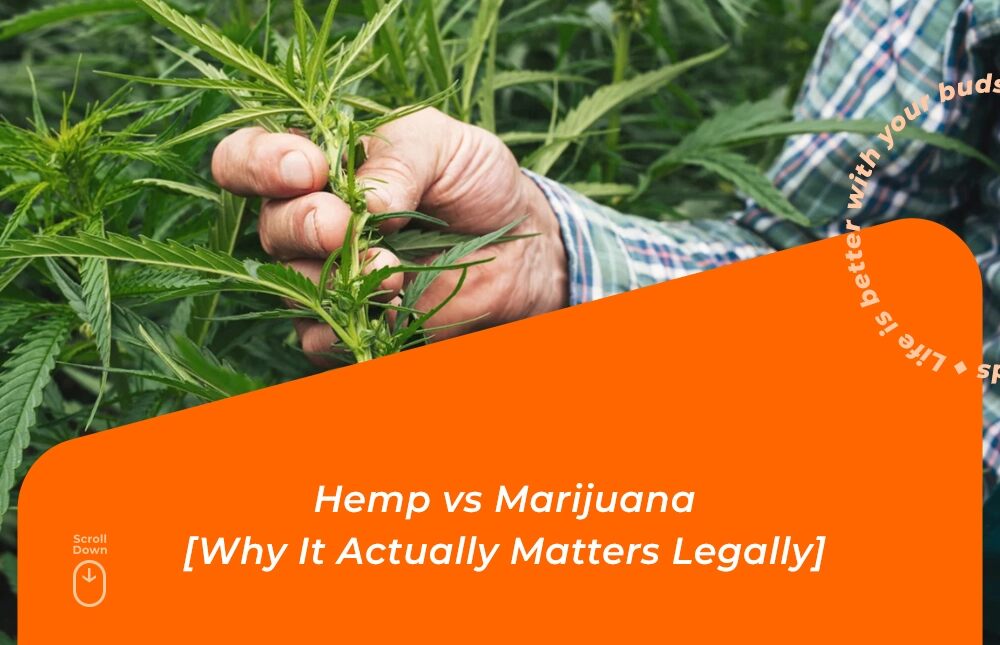
![Is THCA Legal in Georgia? [Major 2025 Update Explained] Is THCA Legal in Georgia? [Major 2025 Update Explained] | BudPop](https://budpop.com/wp-content/uploads/2025/03/Is-thca-legal-in-Georgia-150x150.png)

![Is THCa Legal in Florida? [The Shocking Update To State Law] is thca legal in florida budpop](https://budpop.com/wp-content/uploads/2024/12/is-thca-legal-in-florida-budpop-150x150.jpg)

![Is THCp Legal? [State List & Updated Guide for 2025] is thcp legal](https://budpop.com/wp-content/uploads/2025/01/is-thcp-legal-150x150.jpg)

